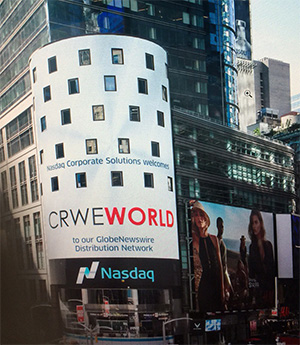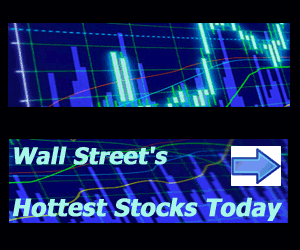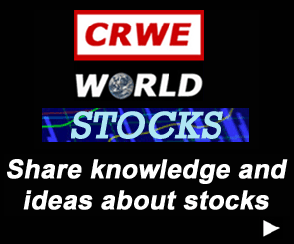HONEYWELL REPORTS SECOND QUARTER RESULTS; UPDATES 2025 GUIDANCE
HONEYWELL REPORTS SECOND QUARTER RESULTS; UPDATES 2025 GUIDANCE |
| [24-July-2025] |
CHARLOTTE, N.C., July 24, 2025 /PRNewswire/ -- Honeywell (NASDAQ: HON) today announced results for the second quarter that met or exceeded the company's guidance. The company also raised its full-year organic growth and adjusted earnings per share guidance ranges and reiterated its free cash flow guidance range. The company reported second-quarter year-over-year sales growth of 8% and organic1 sales growth of 5%, led by double-digit organic sales growth in defense and space and UOP. Operating income increased 7% and segment profit1 increased 8% to $2.4 billion led by growth in Building Automation. Operating margin contracted 30 basis points to 20.4% and segment margin contracted 10 basis points to 22.9%, meeting previous guidance. Earnings per share for the second quarter was $2.45, up 4% year over year, and adjusted earnings per share1 was $2.75, up 10% year over year. Operating cash flow was $1.3 billion, down 4% year over year, and free cash flow1 was $1.0 billion, down 9% year over year. "Honeywell delivered outstanding results in the second quarter with both organic growth and adjusted earnings per share exceeding guidance despite the unpredictable macroeconomic backdrop," said Vimal Kapur, chairman and chief executive officer of Honeywell. "With Building Automation leading the way, three out of four segments grew sales at better than 5% in the quarter, demonstrating the power of our Accelerator operating system to adapt quickly and drive growth even as business conditions change. During the quarter, we also saw promising results from our increased focus on new product innovation, which further supported the growth of our record backlog. In parallel, we continued to take a balanced approach to capital deployment, including selectively pursuing attractive M&A opportunities, such as the bolt-on acquisition of Johnson Matthey's Catalyst Technologies business and the strategic tuck-in of Li-ion Tamer." Kapur added, "With the announcement of our review of strategic alternatives for our Productivity Solutions and Services and Warehouse and Workflow Solutions businesses, this month also marked the conclusion of the in-depth portfolio review that I initiated early in my tenure as CEO to simplify and optimize Honeywell's businesses. As we prepare to separate into three industry-leading public companies, we are confident that our efforts to shape our portfolio have positioned Honeywell to deliver significant value for customers, employees, and shareholders." As a result of the company's second-quarter performance and management's outlook for the remainder of the year, Honeywell updated its full-year sales, segment margin2, and adjusted earnings per share2,3 guidance. Full-year sales are now expected to be $40.8 billion to $41.3 billion with organic1 sales growth in the range of 4% to 5%. Segment margin2 is expected to be in the range of 23.0% to 23.2%, with segment margin2 expansion of 40 to 60 basis points year over year. Adjusted earnings per share2,3 is now expected to be in the range of $10.45 to $10.65, up 20 cents at the midpoint from the prior guidance range. Operating cash flow is still expected to be in the range of $6.7 billion to $7.1 billion, with free cash flow1 in the range of $5.4 billion to $5.8 billion. Excluding the impact of the Bombardier agreement signed in the fourth quarter of 2024, the company expects organic sales growth of 3% to 4%, segment margin down 30 to 10 basis points year over year, and adjusted earnings per share up 1% to 3% year over year. Guidance now includes the impact of the Sundyne acquisition, which closed in June, and the sale of the company's Personal Protective Equipment business, which closed in May. A summary of the company's full-year guidance changes can be found in Table 1. Portfolio Transformation In February, Honeywell announced that its Board of Directors concluded its comprehensive portfolio review and decided to pursue a separation of its Automation and Aerospace businesses. The planned separation, coupled with the previously announced plan to spin advanced materials (now expected in the fourth quarter of 2025), will result in three publicly-listed industry leaders and is intended to be fully completed in the second half of 2026. To oversee the transformation processes, Honeywell formed dedicated separation management offices to ensure that its business leaders remain focused on managing day-to-day operations. During the second quarter, Honeywell continued to optimize its portfolio and judiciously deploy shareholder capital ahead of the planned separation, including repurchasing $1.7 billion of its shares. In May, the company closed the sale of its personal protective equipment business for $1.3 billion, and in July it announced a review of strategic alternatives for its productivity solutions and services and warehouse and workflow solutions businesses. In addition, Honeywell announced the acquisition of Johnson Matthey's Catalyst Technologies business in May for £1.8 billion, closed the acquisition of Sundyne in June for $2.2 billion, and completed the strategic tuck-in acquisition of Li-ion Tamer in July. With these latest transactions, Honeywell has now announced $13.5 billion of acquisitions since December 2023 and exceeded its commitment, unveiled at its 2023 Investor Day, to deploy at least $25 billion toward high-return capital expenditures, dividends, opportunistic share repurchases, and accretive acquisitions through 2025. Second-Quarter Performance Honeywell sales for the second quarter were up 8% year over year on a reported basis and 5% on an organic1 basis year over year. The second-quarter financial results can be found in Tables 2 and 3. Aerospace Technologies sales for the second quarter increased 6% organically1 from the prior year, driven by continued strength in both defense and space and commercial aftermarket. Defense and space grew 13% year over year, aided by an elevated global demand environment. Commercial aftermarket sales increased 7%, led by growth in air transport and ongoing supply chain unlock. Backlog grew 16% from the previous year, supported by strong double-digit growth in orders. Segment margin contracted 170 basis points to 25.5% as commercial excellence and productivity actions were more than offset by cost inflation and the impact of acquisitions. Industrial Automation sales for the second quarter were flat on an organic1 basis. Process solutions increased 1% year over year, led by a return to growth in smart energy. Sensing and safety technologies sales increased 4% year over year, driven by a third consecutive quarter of growth in sensing on sustained demand for healthcare sensors. Sales in warehouse and workflow solutions declined 4% year over year due to timing of large project execution. Productivity solutions and services sales decreased 7% year over year, largely as a result of challenging demand in Europe. Segment margin expanded 20 basis points year over year to 19.2% as productivity actions and commercial excellence more than offset cost pressures. Building Automation sales for the second quarter increased 8% organically year over year. Building products grew 9% with strength across fire, security, and building management systems. Building solutions improved 5% led by growth in the Middle East. Orders grew both year over year and sequentially, led by strength in products. Segment margin expanded 90 basis points from the prior year to 26.2%, driven by volume leverage and benefit from the access solutions acquisition. Energy and Sustainability Solutions sales for the second quarter increased 6% organically year over year. UOP grew 16%, driven by strong petrochemical catalyst shipments, higher licensing sales volumes in gas processing, and strong backlog conversion in sustainability projects. Advanced materials sales increased 1% in the quarter, as strength in specialty chemicals and materials more than offset the continuation of challenging prior year comparisons in fluorine products in the first half of the year. Segment margin contracted 110 basis points to 24.1% as pressure from a customer settlement and cost inflation were partially offset by volume leverage and the margin-accretive LNG acquisition. Conference Call Details Honeywell will discuss its second-quarter results and full-year 2025 guidance during an investor conference call starting at 8:30 a.m. Eastern Daylight Time today. A live webcast of the investor call as well as related presentation materials will be available through the Investor Relations section of the company's website (www.honeywell.com/investor). A replay of the webcast will be available for 30 days following the presentation.
About Honeywell Honeywell uses our Investor Relations website, www.honeywell.com/investor, as a means of disclosing information which may be of interest or material to our investors and for complying with disclosure obligations under Regulation FD. Accordingly, investors should monitor our Investor Relations website, in addition to following our press releases, SEC filings, public conference calls, webcasts, and social media. We describe many of the trends and other factors that drive our business and future results in this release. Such discussions contain forward-looking statements within the meaning of Section 21E of the Securities Exchange Act of 1934, as amended (the Exchange Act), including statements related to the proposed spin-off of the Company's Advanced Materials business into Solstice Advanced Materials, a standalone, publicly traded company, the proposed separation of Automation and Aerospace Technologies, and the evaluation of strategic alternatives for the Productivity Solutions and Services and Warehouse and Workflow Solutions businesses. Forward-looking statements are those that address activities, events, or developments that we or our management intend, expect, project, believe, or anticipate will or may occur in the future. They are based on management's assumptions and assessments in light of past experience and trends, current economic and industry conditions, expected future developments, and other relevant factors, many of which are difficult to predict and outside of our control, including Honeywell's current expectations, estimates, and projections regarding the proposed spin-off of the Company's Advanced Materials business into Solstice Advanced Materials, a standalone, publicly traded company, the proposed separation of Automation and Aerospace Technologies, and the evaluation of strategic alternatives for the Productivity Solutions and Services and Warehouse and Workflow Solutions businesses. They are not guarantees of future performance, and actual results, developments, and business decisions may differ significantly from those envisaged by our forward-looking statements, including the consummation of the spin-off of the Advanced Materials business into Solstice Advanced Materials, the proposed separation of Automation and Aerospace Technologies, and the evaluation of strategic alternatives for the Productivity Solutions and Services and Warehouse and Workflow Solutions businesses, and the anticipated benefits of each. We do not undertake to update or revise any of our forward-looking statements, except as required by applicable securities law. Our forward-looking statements are also subject to material risks and uncertainties, including ongoing macroeconomic and geopolitical risks, such as changes in or application of trade and tax laws and policies, including the impacts of tariffs and other trade barriers and restrictions, lower GDP growth or recession in the U.S. or globally, supply chain disruptions, capital markets volatility, inflation, and certain regional conflicts, which can affect our performance in both the near and long term. In addition, no assurance can be given that any plan, initiative, projection, goal, commitment, expectation, or prospect set forth in this release can or will be achieved. These forward-looking statements should be considered in light of the information included in this release, our Form 10-K, and our other filings with the Securities and Exchange Commission. Any forward-looking plans described herein are not final and may be modified or abandoned at any time. This release contains financial measures presented on a non-GAAP basis. Honeywell's non-GAAP financial measures used in this release are as follows:
Management believes that, when considered together with reported amounts, these measures are useful to investors and management in understanding our ongoing operations and in the analysis of ongoing operating trends. These measures should be considered in addition to, and not as replacements for, the most comparable GAAP measure. Certain measures presented on a non-GAAP basis represent the impact of adjusting items net of tax. The tax-effect for adjusting items is determined individually and on a case-by-case basis. Refer to the Appendix attached to this release for reconciliations of non-GAAP financial measures to the most directly comparable GAAP measures.
Appendix Non-GAAP Financial Measures The following information provides definitions and reconciliations of certain non-GAAP financial measures presented in this press release to which this reconciliation is attached to the most directly comparable financial measures calculated and presented in accordance with generally accepted accounting principles (GAAP). Management believes that, when considered together with reported amounts, these measures are useful to investors and management in understanding our ongoing operations and in the analysis of ongoing operating trends. These measures should be considered in addition to, and not as replacements for, the most comparable GAAP measure. Certain measures presented on a non-GAAP basis represent the impact of adjusting items net of tax. The tax-effect for adjusting items is determined individually and on a case-by-case basis. Other companies may calculate these non-GAAP measures differently, limiting the usefulness of these measures for comparative purposes. Management does not consider these non-GAAP measures in isolation or as an alternative to financial measures determined in accordance with GAAP. The principal limitations of these non-GAAP financial measures are that they exclude significant expenses and income that are required by GAAP to be recognized in the consolidated financial statements. In addition, they are subject to inherent limitations as they reflect the exercise of judgments by management about which expenses and income are excluded or included in determining these non-GAAP financial measures. Investors are urged to review the reconciliation of the non-GAAP financial measures to the comparable GAAP financial measures and not to rely on any single financial measure to evaluate Honeywell's business.
We define organic sales percentage as the year-over-year change in reported sales relative to the comparable period, excluding the impact on sales from foreign currency translation and acquisitions, net of divestitures, for the first 12 months following the transaction date. We believe this measure is useful to investors and management in understanding our ongoing operations and in analysis of ongoing operating trends. A quantitative reconciliation of reported sales percent change to organic sales percent change has not been provided for the forward-looking measure of organic sales percent change because management cannot reliably predict or estimate, without unreasonable effort, the fluctuations in global currency markets that impact foreign currency translation, nor is it reasonable for management to predict the timing, occurrence and impact of acquisition and divestiture transactions, all of which could significantly impact our reported sales percent change.
We define operating income as net sales less total cost of products and services sold, research and development expenses, impairment of assets held for sale, and selling, general and administrative expenses. We define segment profit, on an overall Honeywell basis, as operating income, excluding stock compensation expense, pension and other postretirement service costs, amortization of acquisition-related intangibles, certain acquisition- and divestiture-related costs and impairments, and repositioning and other charges. We define segment profit margin, on an overall Honeywell basis, as segment profit divided by net sales. We believe these measures are useful to investors and management in understanding our ongoing operations and in analysis of ongoing operating trends. A quantitative reconciliation of operating income to segment profit, on an overall Honeywell basis, has not been provided for all forward-looking measures of segment profit and segment profit margin included herein. Management cannot reliably predict or estimate, without unreasonable effort, the impact and timing on future operating results arising from items excluded from segment profit, particularly pension mark-to-market expense as it is dependent on macroeconomic factors, such as interest rates and the return generated on invested pension plan assets. The information that is unavailable to provide a quantitative reconciliation could have a significant impact on our reported financial results. To the extent quantitative information becomes available without unreasonable effort in the future, and closer to the period to which the forward-looking measures pertain, a reconciliation of operating income to segment profit will be included within future filings. Acquisition amortization and acquisition- and divestiture-related costs are significantly impacted by the timing, size, and number of acquisitions or divestitures we complete and are not on a predictable cycle and we make no comment as to when or whether any future acquisitions or divestitures may occur. We believe excluding these costs provides investors with a more meaningful comparison of operating performance over time and with both acquisitive and other peer companies.
We define adjusted earnings per share as diluted earnings per share adjusted to exclude various charges as listed above. We believe adjusted earnings per share is a measure that is useful to investors and management in understanding our ongoing operations and in analysis of ongoing operating trends. For forward-looking information, management cannot reliably predict or estimate, without unreasonable effort, the pension mark-to-market expense or the divestiture-related costs. The pension mark-to-market expense is dependent on macroeconomic factors, such as interest rates and the return generated on invested pension plan assets. The divestiture-related costs are subject to detailed development and execution of separation restructuring plans for the announced separation of Automation and Aerospace Technologies. We therefore do not include an estimate for the pension mark-to-market expense or divestiture-related costs. Based on economic and industry conditions, future developments, and other relevant factors, these assumptions are subject to change. Acquisition amortization and acquisition- and divestiture-related costs are significantly impacted by the timing, size, and number of acquisitions or divestitures we complete and are not on a predictable cycle and we make no comment as to when or whether any future acquisitions or divestitures may occur. We believe excluding these costs provides investors with a more meaningful comparison of operating performance over time and with both acquisitive and other peer companies.
We define free cash flow as cash provided by operating activities less cash for capital expenditures. We believe that free cash flow is a non-GAAP measure that is useful to investors and management as a measure of cash generated by operations that will be used to repay scheduled debt maturities and can be used to invest in future growth through new business development activities or acquisitions, pay dividends, repurchase stock, or repay debt obligations prior to their maturities. This measure can also be used to evaluate our ability to generate cash flow from operations and the impact that this cash flow has on our liquidity.
We define free cash flow as cash provided by operating activities less cash for capital expenditures. We believe that free cash flow is a non-GAAP measure that is useful to investors and management as a measure of cash generated by operations that will be used to repay scheduled debt maturities and can be used to invest in future growth through new business development activities or acquisitions, pay dividends, repurchase stock, or repay debt obligations prior to their maturities. This measure can also be used to evaluate our ability to generate cash flow from operations and the impact that this cash flow has on our liquidity.
SOURCE Honeywell | |||||||||||||||||||||||||||||||||||||||||||||||||||||||||||||||||||||||||||||||||||||||||||||||||||||||||||||||||||||||||||||||||||||||||||||||||||||||||||||||||||||||||||||||||||||||||||||||||||||||||||||||||||||||||||||||||||||||||||||||||||||||||||||||||||||||||||||||||||||||||||||||||||||||||||||||||||||||||||||||||||||||||||||||||||||||||||||||||||||||||||||||||||||||||||||||||||||||||||||||||||||||||||||||||||||||||||||||||||||||||||||||||||||||||||||||||||||||||||||||||||||||||||||||||||||||||||||||||||||||||||||||||||||||||||||||||||||||||||||||||||||||||||||||||||||||||||||||||||||||||||||||||||||||||||||||||||||||||||||||||||||||||||||||||||||||||||||||||||||||||||||||||||||||||||||||||||||||||||||||||||||||||||||||||||||||||||||||||||||||||||||||||||||||||||||||||||||||||||||||||||||||||||||||||||||||||||||||||||||||||||||||||||||||||||||||||||||||||||||||||||||||||||||||||||||||||||||||||||||||||||||||||||||||||||||||||||||||||||||||||||||||||||||||||||||||||||||||||||||||
Company Codes: NASDAQ-NMS:HON | |||||||||||||||||||||||||||||||||||||||||||||||||||||||||||||||||||||||||||||||||||||||||||||||||||||||||||||||||||||||||||||||||||||||||||||||||||||||||||||||||||||||||||||||||||||||||||||||||||||||||||||||||||||||||||||||||||||||||||||||||||||||||||||||||||||||||||||||||||||||||||||||||||||||||||||||||||||||||||||||||||||||||||||||||||||||||||||||||||||||||||||||||||||||||||||||||||||||||||||||||||||||||||||||||||||||||||||||||||||||||||||||||||||||||||||||||||||||||||||||||||||||||||||||||||||||||||||||||||||||||||||||||||||||||||||||||||||||||||||||||||||||||||||||||||||||||||||||||||||||||||||||||||||||||||||||||||||||||||||||||||||||||||||||||||||||||||||||||||||||||||||||||||||||||||||||||||||||||||||||||||||||||||||||||||||||||||||||||||||||||||||||||||||||||||||||||||||||||||||||||||||||||||||||||||||||||||||||||||||||||||||||||||||||||||||||||||||||||||||||||||||||||||||||||||||||||||||||||||||||||||||||||||||||||||||||||||||||||||||||||||||||||||||||||||||||||||||||||||||||




















